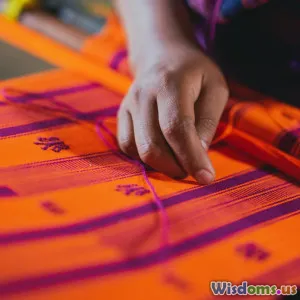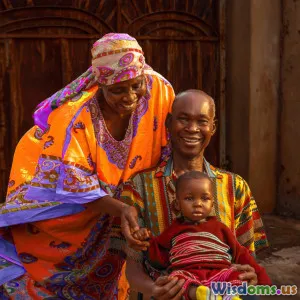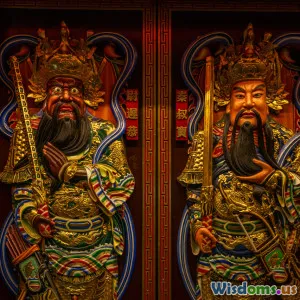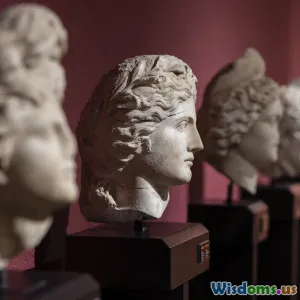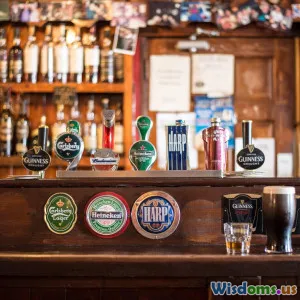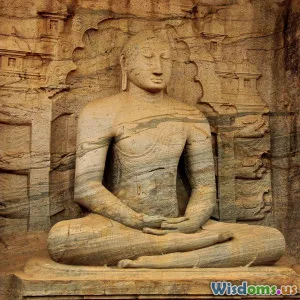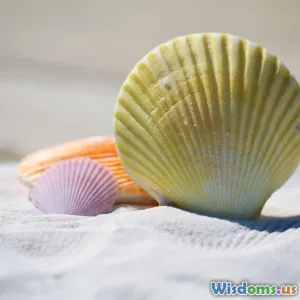
First Humans in Polynesian Legends Were Born From Shells Heres Why
8 min read Explore why Polynesian legends speak of first humans born from shells, revealing deep cultural symbolism and ancient connections with nature and the ocean. (0 Reviews)
First Humans in Polynesian Legends Were Born From Shells: Here's Why
Introduction
Throughout history, myths have served as bridges connecting humanity to the mysteries of existence, origins, and nature. Among the diverse mythologies worldwide, Polynesian legends hold a unique place, deeply intertwined with the ocean, islands, and natural elements. One of the most fascinating motifs in Polynesian storytelling is the idea that the first humans were born not from the earth or conventional divine methods but from shells.
This seemingly curious origin story might appear fantastical at first glance, yet it reveals profound cultural meanings. Why were shells chosen as the birthplace of humanity in these tales? What symbolism underpins this imagery? In this article, we dive deep into the layers of Polynesian shell mythology, examining its cultural, spiritual, and ecological significance.
Polynesian Creation Narratives: An Oceanic Worldview
The Centrality of the Ocean
The Polynesian triangle—stretching across Hawaii, New Zealand, and Easter Island—contains the richest network of intricate oceanic cultures. The sea is not just a backdrop but a living, sacred entity integral to survival, travel, and spirituality.
According to ethnographers like Te Rangi Hīroa (Peter Buck), Polynesian societies often portray the ocean as a mother figure, a nourishing force sustaining life. Hence, birth myths connected to marine elements are logical extensions of their worldview.
Shells as Symbols
Shells occupy a revered place in Polynesian ecosystems:
- Economic and Practical Usage: Shells were used as tools, ornaments, currency, and ceremonial items.
- Spiritual Connection: The spiral structure and organic beauty of shells inspired symbolic interpretations of life cycles, growth, and the universe’s infinity.
Historical artifacts show intricate shell carvings and jewelry that underscore this esteem. Shells embody a bridge between sea and land, making them natural metaphors for origin stories.
Legends of Humans Born From Shells
Case Study: The Tongan Accounts
In Tongan creation myths, as cataloged by early anthropologists, it is recorded that the first divine couple or ancestors emerged from shells left by the ocean. One famous legend tells of a large, magical conch shell that split open, giving life to mankind.
The shell here acts as a cosmic womb—a protective casing harboring the earliest humans until the moment of emergence. It signifies the ocean’s creative power and the intimate relationship between people and their aquatic environment.
Hawaiian Shell-Birth Stories
Similarly, Hawaiian mythology includes legends where the first people or gods came forth from luminescent shells washed ashore on the islands.
In some versions, these shells were sent by gods from the ocean depths as seeds of life to new islands, indicating a divine directive to colonize and steward new land masses. These stories underline themes of rebirth, providence, and the ocean’s generosity.
Māori Perspectives
Among the Māori of New Zealand, shell lore emphasizes pakohe (argillite) and other materials but shells feature significantly in spiritually symbolic narratives, especially about the primordial gooeyness of creation and emergence from watery realms.
The motif of birth or creation from shells parallels broader Polynesian oceanic metaphors but is distinctively linked to human lineage and respect for marine guardianship.
Symbolic and Spiritual Interpretations
Shells as the Womb of the Sea
The protective and enveloping nature of a shell makes it a powerful symbol of gestation. Just as a mother’s womb shields and nurtures the unborn child, shells encapsulate the first humans before they enter the world.
Reproducing this imagery strengthens the perceived connection between the people and the ocean—an ancestral source of life and sustenance.
Embodying Cycles of Life
The spiral patterns and growth stages of many shells represent cyclical time and rebirth. Polynesian legends underscore humans’ place in the continuous renewal of life, closely observed in natural oceanic cycles like tide rhythms and moon phases.
This symbolism intertwines cosmology with human origins, positioning shells not only as a literal birthplace but also a metaphor for universal generative forces.
Cultural Identity and Belonging
Claiming lineage from shells empowers Polynesian peoples to assert identities rooted in the oceanic environment. It emphasizes kinship with the land and sea, reinforcing stewardship roles and communal values essential for island survival.
Anthropologist Epeli Hau’ofa argued that such cosmologies inspire a shared connection to ‘Oceania’ as a vast, interconnected space rather than isolated islands, highlighting belonging and mutual responsibility.
Real-World Reflections of the Shell-Birth Mythos
Contemporary Artistic Expressions
Modern Polynesian artists often revisit the shell as a creative motif reflecting heritage, resurrection, and ecological harmony. Sculptures, tattoos, and paintings reflect the narratives of birth and identity through oceanic forms, reinforcing these ancient stories in new contexts.
Environmental and Cultural Revival
The symbolic importance of shells shapes environmental movements advocating for ocean conservation among Polynesian communities. Recognizing the ocean as a life-giver—the original womb—motivates sustainable practices and challenges the depletion of marine biodiversity.
Educational Insights
Incorporating these legends in education supports cultural preservation and restores indigenous knowledge systems. Schools and cultural centers across Polynesia integrate creation myths involving shells in curricula to deepen respect for heritage and environmental awareness.
Conclusion
The Polynesian portrayal of the first humans born from shells transcends simple mythology, offering profound insights into the interdependent relationship between people, nature, and spiritual beliefs. Shells are not just natural artifacts but potent symbols of life’s origin, oceanic power, and cultural identity.
Understanding these ancient stories enriches our appreciation of Polynesian cultures and highlights timeless themes of creation, protection, and belonging. It invites us all to reflect on how myths shape human perspectives on environment and ancestry, encouraging a more harmonious stewardship of our planet’s fragile ecosystems.
As we listen to these shell-birth stories echo across the Pacific waves, we are reminded that our beginnings are often linked with the deep, mysterious forces of the natural world—anchoring past, present, and future in one enduring narrative.
Rate the Post
User Reviews
Other posts in Cultural Studies
Popular Posts












